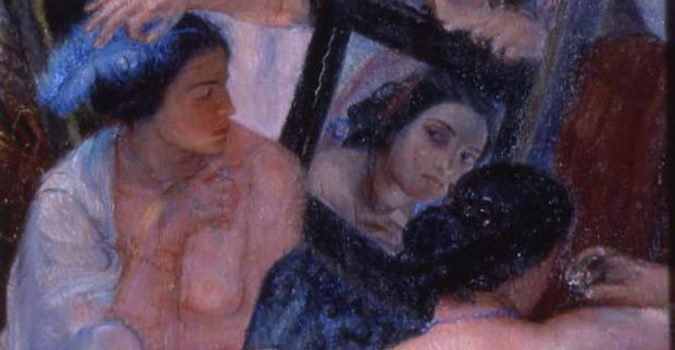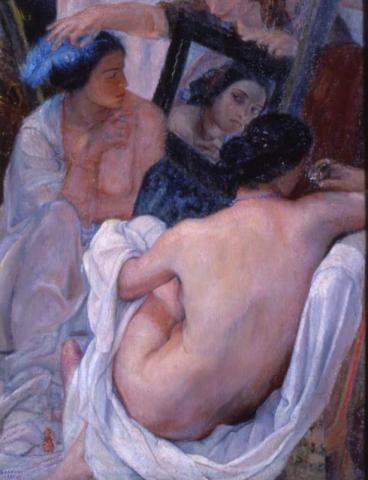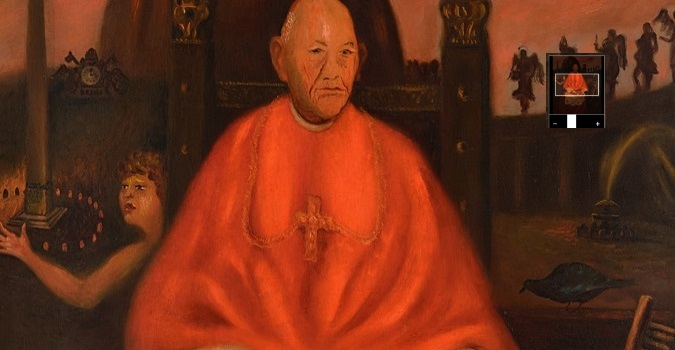The Artwork of the Month - December 2022
Ferruccio Ferrazzi
(Roma 1891 - 1978)
Frammento di composizione, 1920-1921
Oil on canvas, 94 x 73.5 cm
Inv. AM 23

December's #operadelmese is Frammento di composizione, an oil on canvas by the Roman painter Ferruccio Ferrazzi. As the title suggests, this painting is a "fragment" of a larger composition, specifically the second of three versions of the painting Vita Gaia, a complex scene with nude and clothed figures in a domestic interior, reworked several times by Ferrazzi between 1921 and 1923 to depict the ages of women. Always dissatisfied with the composition, which he considered insufficiently unified and homogenous, Ferrazzi in fact worked separately on the various parts of the painting and produced several versions of each.
In this light group portrait of a woman, the woman in the foreground, seen from behind, surrounded by a white drape, turns her gaze towards the object she holds in her right hand, probably a polyhedral crystal; in front of her, another woman, partially covered, gazes absorbedly at her own image clearly reflected in a mirror, while adorning herself with a necklace; a third figure, with red hair, standing in the background, holds the mirror and trims a feather in the second woman's hair. The triangulation of the gazes and the intertwining of gestures create an enigmatic, intimate circularity, confirmed by the skilful rhythm of the drawing and the opulence of the colours, dominated by blues and pink-red-purple hues. Only the mirrored image seems to establish an interaction between the women, rendering a portrait that is now real and now, in some respects, incoherent and imagined.
The women's nudes recall the Ancient world and the tradition of academic classicism (evoking in particular the traditional themes of Venus and Susanna), but also the bathers of the last Renoir. The mirror, already used by artists such as Titian and Ingres, Savoldo and Velázquez, is an element with a strongly allegorical character, and is recurrent in the contemporary production of Ferrazzi, a man of vast artistic culture, introduced to painting at a very young age by his father and brother Riccardo, both artists. This object, as well as nudity, alludes to total knowledge of oneself and of reality beyond all pretence, deception and reticence. It is no coincidence that references to the rich symbolism of the mirror and the prism have been evoked with regard to the Renaissance theme of Vanitas, Leonardo da Vinci's treatises and Theosophy. A painting that remains, however, of complex interpretation.
The work was purchased by the Municipality of Rome in 1923 on the occasion of the 2nd Biennale Romana, in which Ferrazzi exhibited no less than twenty-five works including paintings, drawings and sculptures, testifying to an already solid career that, after academic training and a futurist and secessionist period, led in the 1920s to a refined "neoclassical" painting tinged with suggestive symbolism.
Return to the section > The Galleria d'Arte Moderna artwork of the month







































